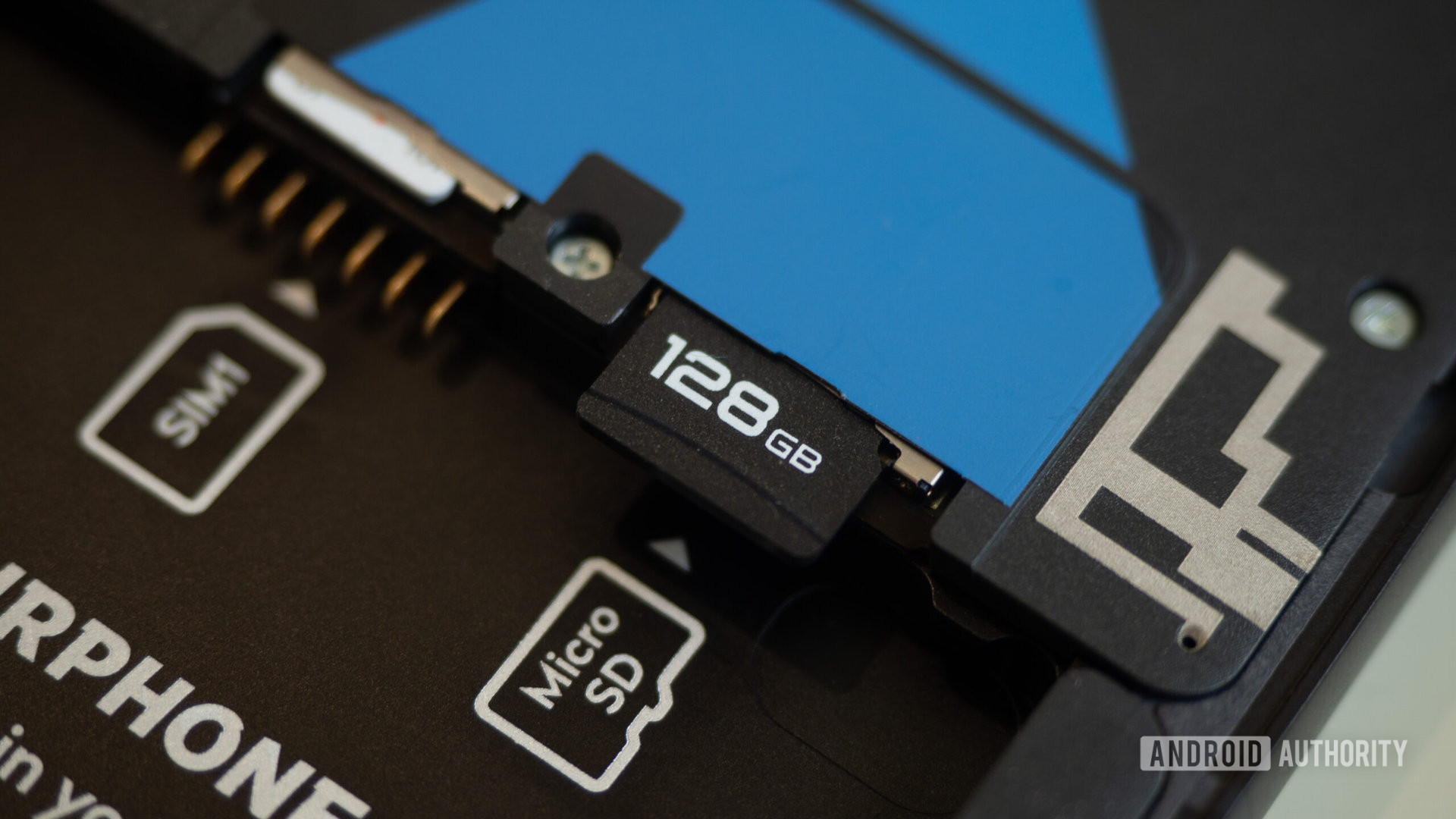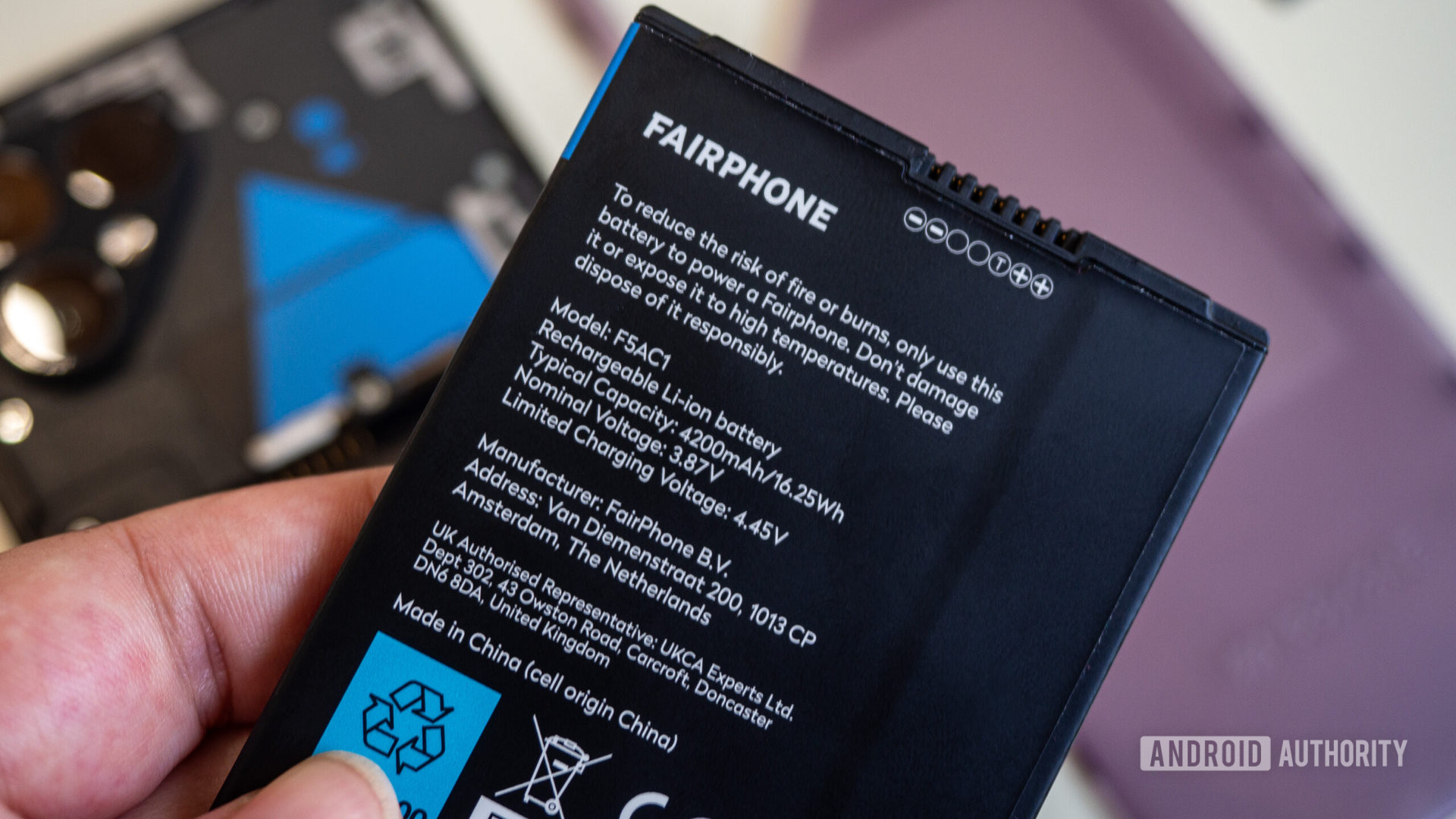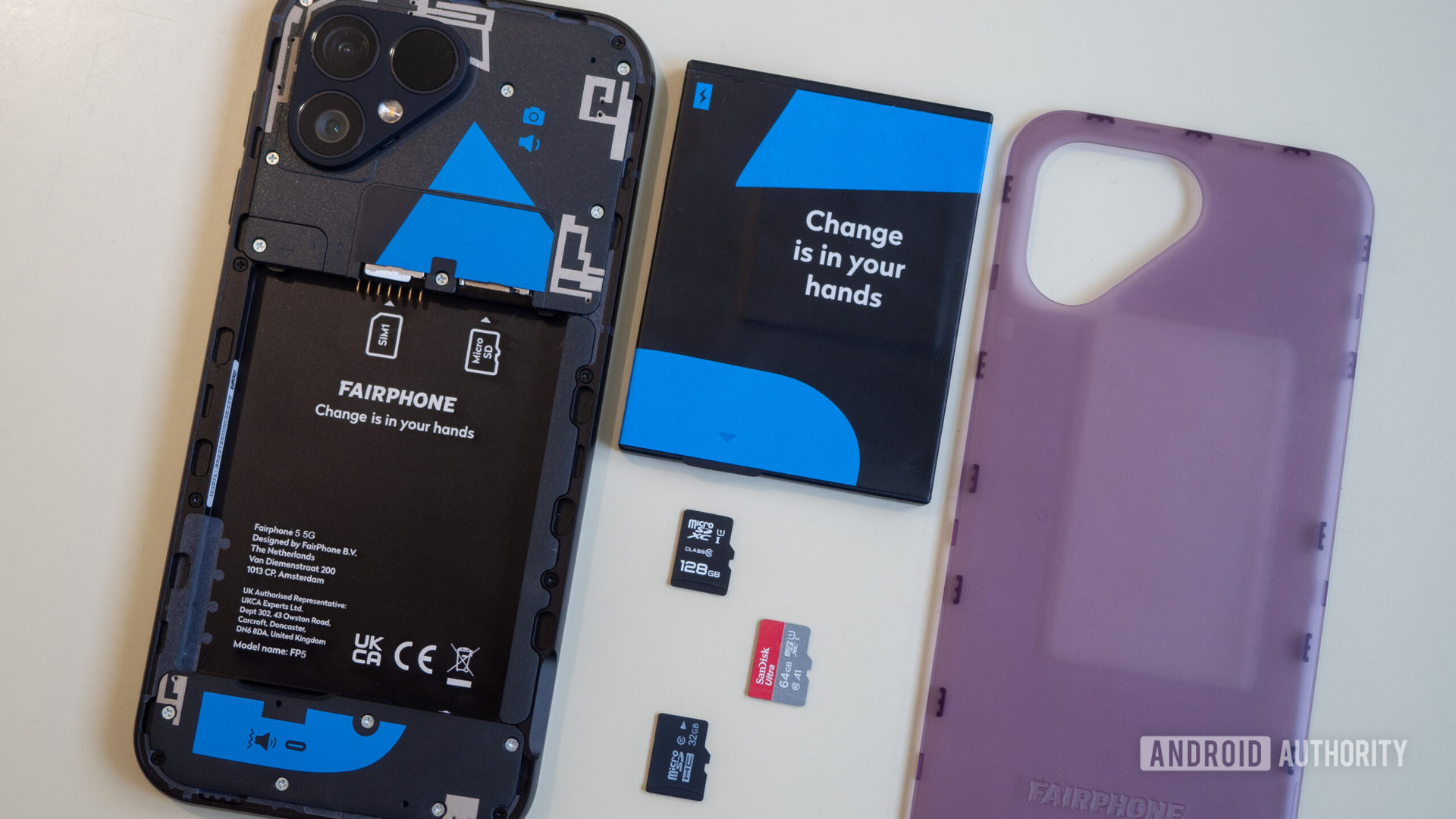Affiliate links on Android Authority may earn us a commission. Learn more.
Man, I really miss removable batteries and microSD card slots
September 9, 2023
It’s one thing to watch a video of the Fairphone 5 being taken apart, it was another to hold it in my hand for the first time and realize how different it feels compared to today’s Android phones. It immediately reminded me of Nokia under its two identities: the good ol’ Nokia of customizable back covers and removable batteries, and the new HMD Nokia of pure Android and slightly utilitarian hardware designs.
Before even turning on the Fairphone 5, I popped open the transparent rear cover and took out the battery. It felt like I was thrown back in time to my first phone experience in 2003. Phones were designed around convenience and repairability then; you could take off the back and/or front frames and change your entire phone’s color for $20. Batteries lasted around a year, so you’d get a new one when the original battery started showing aging signs. And mom-and-pop shops were always ready with a couple of screwdrivers if you needed to fix something.

With the battery out, I saw another relic of times past — a microSD card slot. Barring a few smartphones with expandable storage, today’s flagships with their $100 extra per storage tier made me forget what this was like. What do you mean I can pop in a $12 microSD card and suddenly, I have 128GB of extra storage?! What a fantastic money-saving tip!
Do you miss removable batteries and expandable storage in smartphones?
This got me thinking of the subpar experience that Apple, Samsung, Google, and several other smartphone makers are imposing. When my 128GB Pixel 7 Pro started warning me of full storage a month ago, I could have just slotted in one of the empty microSD cards from my drawer, instead of fussing with different storage-freeing techniques for days until I had a few GBs to spare. How silly is it that a phone built around the camera can only take a few dozen 4K HDR videos before it screams for mercy?
If my phone ran out of storage, I could pop in a microSD card. If the battery died, I could slot in another one. Simple as that.
And when my Pixel 7 Pro runs out of juice in the afternoon of a super busy day, I could buy an extra and keep it charged. Take off the empty battery, pop in the second one, and off I go. No dangling cables, no charger to carry, and no overheating phone. Not to mention that I could simply replace the battery after a couple of years to keep my Pixel fresh for those four years of security updates.

These solutions would’ve worked in the early 2010s, but somehow progress took us backward. In retrospect, I can see companies making an argument against the 3.5mm port, for example. It was tough to waterproof and it took a lot of valuable space inside a phone, but you can still use a USB-C DAC for wired headphones or go wireless with some Bluetooth buds. Those are viable alternatives and solutions.
Glueing in the rear battery cover is a lazy shortcut. Removing expandable storage is a greedy move.
But there are no tangible reasons to remove the microSD slot (besides company greed and bottom lines) nor are there any realistic alternatives to a non-removable battery. The only solutions are to pay more for a higher storage tier and send your phone in for repair to replace the battery. (Some right-to-repair initiatives are making the latter more accessible, but the task still generally requires a specialist.)
It’s been 10 years almost to the day since I relinquished both of these good features. As I switched from a Samsung Galaxy S3 to an LG G2, I found myself living in a world where I couldn’t buy replacement batteries or add extra storage on the cheap. Worse yet, I had to figure out how to quickly transfer all the photos, videos, offline music, and podcasts I was storing on my microSD card onto my new phone. Spoiler: It took an eternity and a shitty micro-USB microSD card reader/adapter.
From then on, I couldn’t rely on SD cards for easy storage and transfers anymore. I had to adapt and remember to regularly use a cable to transfer my data back to my computer. I couldn’t carry a lot of data either; the 32GB on my G2 had to be enough for all of my media. I wasn’t happy about it, but the tech world was moving in that direction and if I wanted the other cool specs and features, I had to contend with these drawbacks.
'It is what it is.' 'That's the price of a modern smartphone experience.' I had become complacent, but the Fairphone 5 made me rethink that.
Since then, I’ve jumped between the LG G series, Galaxy S series, and Pixel phones with two constants: no removable batteries and no microSD slots. I got desensitized to this too. “It is what it is.” And to be frank, as a tech writer with a bit more access to modern flagships than your average Joe, I didn’t have to deal with the consequences all that much. I switch phones yearly, before the battery degrades or the storage fills up (generally), and hand over my older device to relatives who demand less of it.

But with the Fairphone 5 in my hand now, I’m rethinking that complacent position. Why does it take a niche company and the European Commission to fix a problem that shouldn’t have been a problem in the first place?
Removable batteries are awesome and I can’t wait until phone manufacturers figure out how to implement them by 2027 (the European Commission is forcing them to), hopefully without sacrificing a strong IP rating. And microSD storage is incredibly useful at a time when smartphones can shoot 4K HDR (if not 8K) video. Paying $100-200 extra for the same phone with a bit more memory when expandable storage is so cheap is pitiful.
I don’t think I’ll list a removable battery or microSD slot as absolute requirements for my next purchase, but they’ll seriously factor into my decision from now on. Their absence feels more like a real con now and the list of pros will have to outweigh it.